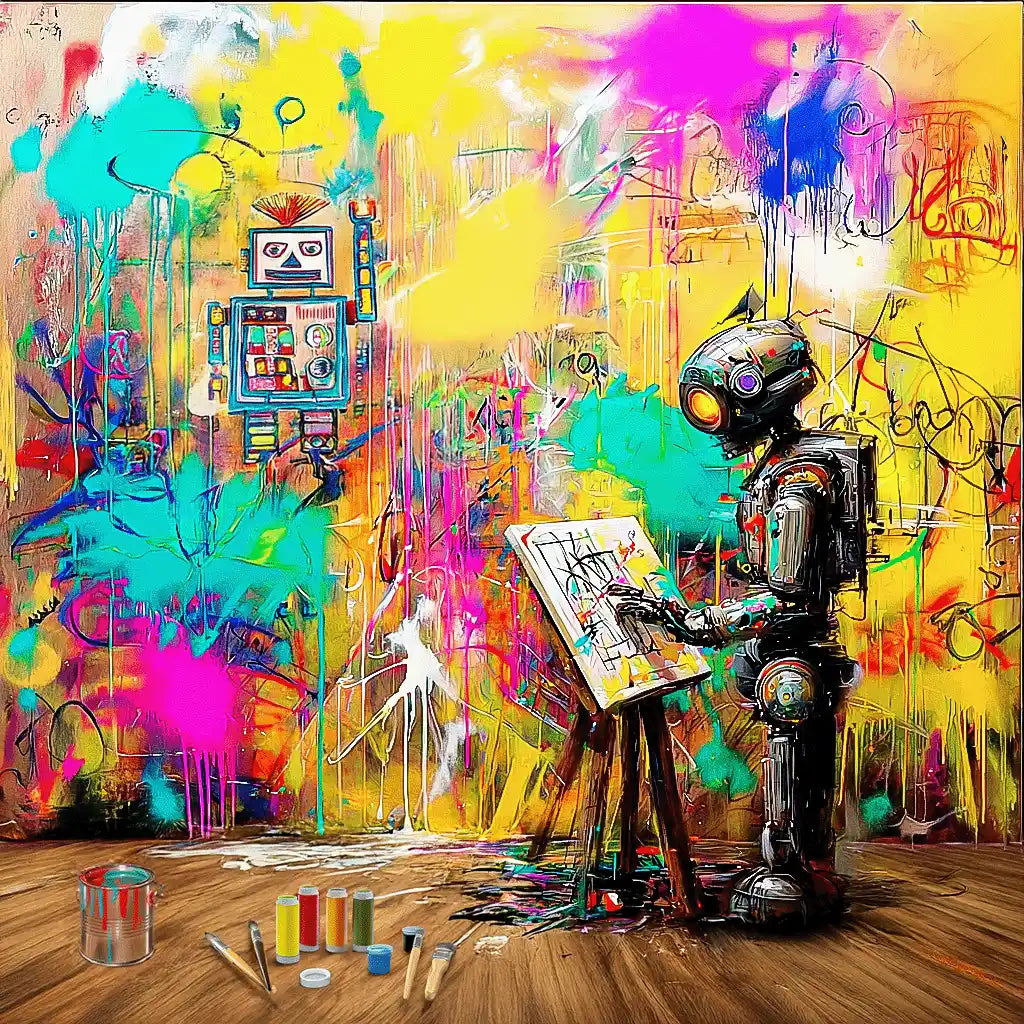
Digital Art in the Age of AI: A Tool, Not the Whole Toolbox
Share
In today’s fast-paced digital world, graphic design and digital art are evolving rapidly—and one of the most debated topics is the use of AI-generated imagery. There’s a growing misconception that digital artists—particularly those using AI—simply generate an image with a click and call it done. This couldn’t be further from the truth. AI is just one tool in our expansive creative toolbox—and it still falls short of delivering print-ready art on its own.
AI Is Just One Tool in the Toolbox
Digital art is a dynamic fusion of creativity, skill, and tools crafted with intention and expertise. Today’s digital artists draw from a wide range of resources—photographs, stock images, and yes, AI-generated elements. These are raw materials that require skillful manipulation to become part of a cohesive, professional piece.
AI-generated images often serve as a starting point, not a finished product. AI is like a paintbrush, a camera, or Photoshop: it’s only useful in the hands of someone who knows how to use it. While it can offer a creative jumpstart or generate interesting textures and forms, the results are typically far from polished.
Most AI outputs arrive in low resolution, making them unsuitable for printing. They must be significantly upscaled—an involved technical process—but even then, the work doesn’t stop. AI images often appear dark, flat, and lack visual depth, requiring careful adjustments to contrast, color balance, levels, and lighting. AI also introduces unwanted artifacts and surreal flaws—like extra fingers, warped facial features, or strange distortions. These demand extensive retouching, anatomical correction, object removal, and sharpening to make the image usable. These imperfections highlight AI’s limitations and underscore the human expertise needed to elevate the raw output.
Artists are no longer limited-but they still lead the process
It’s not about letting AI do the work; it’s about pushing past its limitations, editing it, manipulating it, and ultimately transforming it into a finished digital work of art. AI doesn’t know your style. It doesn’t have a sense of narrative, emotion, balance, or contrast. That’s where the artist steps in.
As a graphic designer, my creative process is a vibrant blend of tools and techniques such as collecting, compositing, enhancing, and transforming raw pieces into a polished, cohesive vision that comes alive. Think of it like digital collage-making. Every layer, every color choice, every adjustment is intentional—and none of it is left up to chance or a machine. These decisions aren’t made by AI—they’re made by me. You can explore more of these finished pieces in my store, where each artwork reflects the same layered, hands-on process.
Final Thoughts
I believe the stigma around digital artists using AI comes from a lack of understanding. People assume AI replaces the artist—but for many of us, it’s simply expanding the creative toolbox. It’s a way to explore new possibilities and push beyond the boundaries of traditional media or limited resources. It doesn’t diminish the work—it evolves it.
If you’re a fellow artist, don’t be afraid to experiment with new tools. If you’re an art lover or collector, know that behind every stunning digital piece is hours of unseen work—regardless of the tools used. At the end of the day, art is about intention, emotion, and vision—and no AI can replicate that without a human at the helm.
By combining AI with other tools and our own artistic vision, we create work that’s distinctly human, polished, and professional. So the next time you see a striking digital artwork, know it’s the artist’s hands—and not just AI—that brought it to life.
The future of design isn’t man versus machine—it’s man with machine. And when used with intention, AI can enhance creativity—not replace it.
